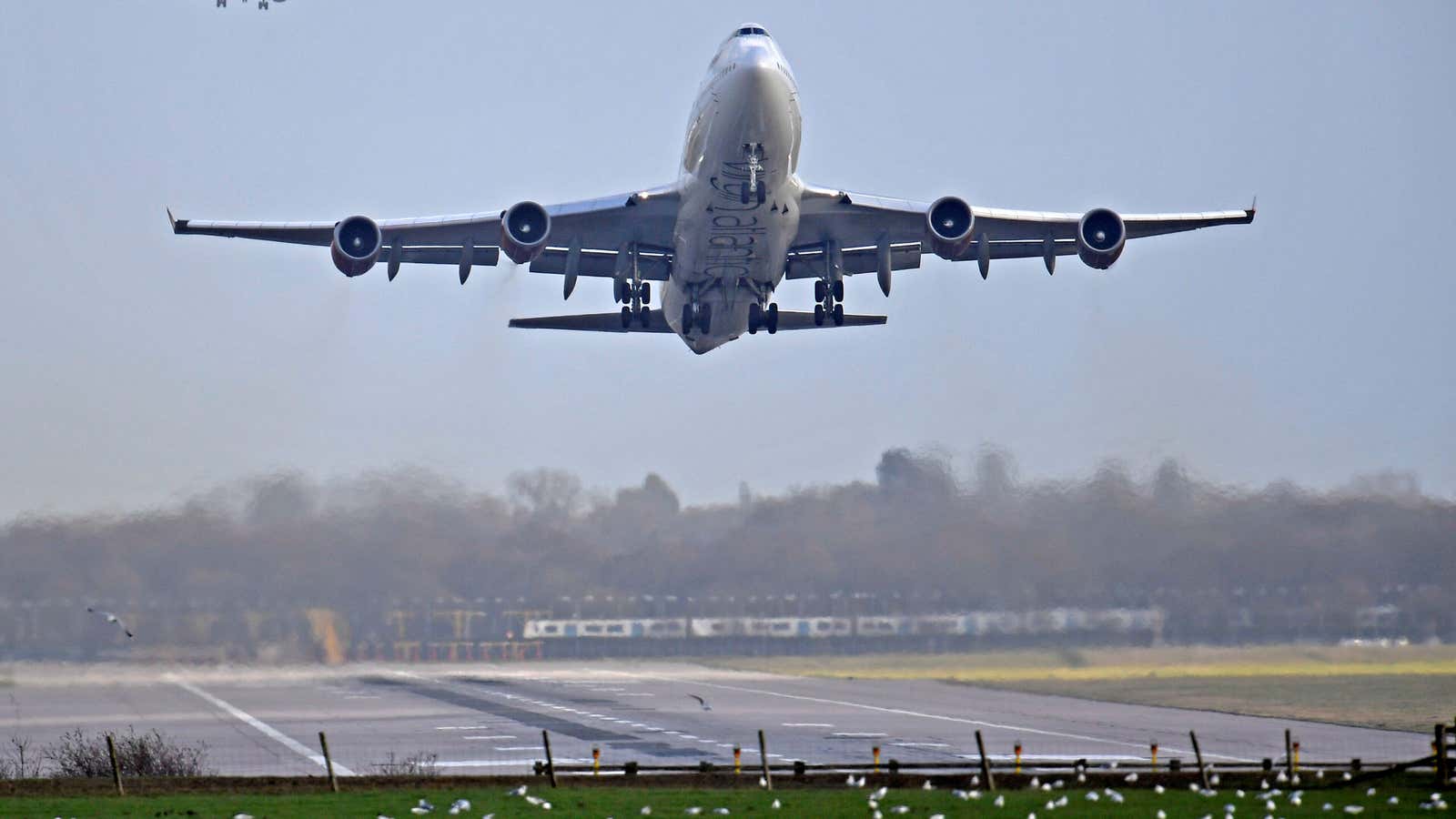The year 2019 is turning out to be a dreadful one for Indian flyers, yet airlines may come through it successfully.
The financial crisis at India’s oldest private carrier, Jet Airways, has strained the sector’s capacity, elevated fares, and hit air passenger growth.
Between January and March 2019, the number of domestic flyers in India grew at a mere 5% year-on-year, compared with 24.1% in the same quarter last year, according to a May 14 report from credit ratings agency CARE.
International passenger growth, too, was tepid—6.6%, compared with 14% a year ago—especially after Pakistan fully closed its airspace to Indian flights following heightened tension between the two countries.
Yet, “it would take (a) considerable time for domestic airlines to make up for the extinguished seat inventory…we expect fares across domestic routes to remain elevated till July 2019,” the report by CARE noted.
The agency, hence, expects domestic airlines to report operating profits in financial year 2019-20.
They will also see additional benefits accrue this year due to the government’s UDAN (Ude Desh Ka Aam Nagrik) initiative, which aims to improve air connectivity between metro and non-metro cities, CARE said. Besides, under this programme, the government had waived airport charges and extended other concessions to airlines.
On April 16, budget carrier SpiceJet announced adding five 90-seater Q400 Bombardier aircraft to fly on regional routes. On the same day, market leader IndiGo, too, announced 18 additional flights from Mumbai and Delhi to various non-metro cities. “This is an effort to make it easier for customers to find affordable fares during the busy season,” IndiGo had then said.
Oil prices
These tailwinds aside, CARE has warned of risks posed by firming global oil prices and competition from abroad. “Higher crude price hurts India’s airlines more. Domestic airlines pay an average 35%-40% higher price for ATF (aviation turbine fuel) than international airlines.”
On May 01, the ATF price in New Delhi was hiked by 2.5% (Rs1,595.63, or $22, per kilolitre). This was the third consecutive monthly increase in ATF prices—on April 01, it was hiked by Rs677.1 per kilolitre and on March 01, by a steep Rs4,734.15 per kilolitre.
“If crude oil price keeps increasing, even with higher ticket fares, dip in passenger growth will put pressure on airlines’ margins,” Kinjal Shah, aviation analyst at rating agency ICRA, told Quartz.
